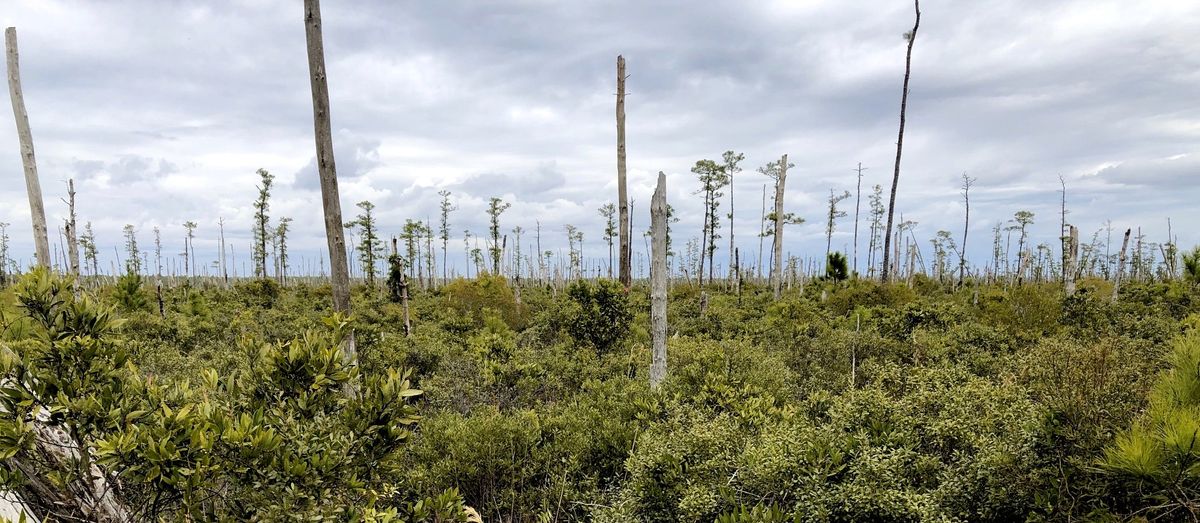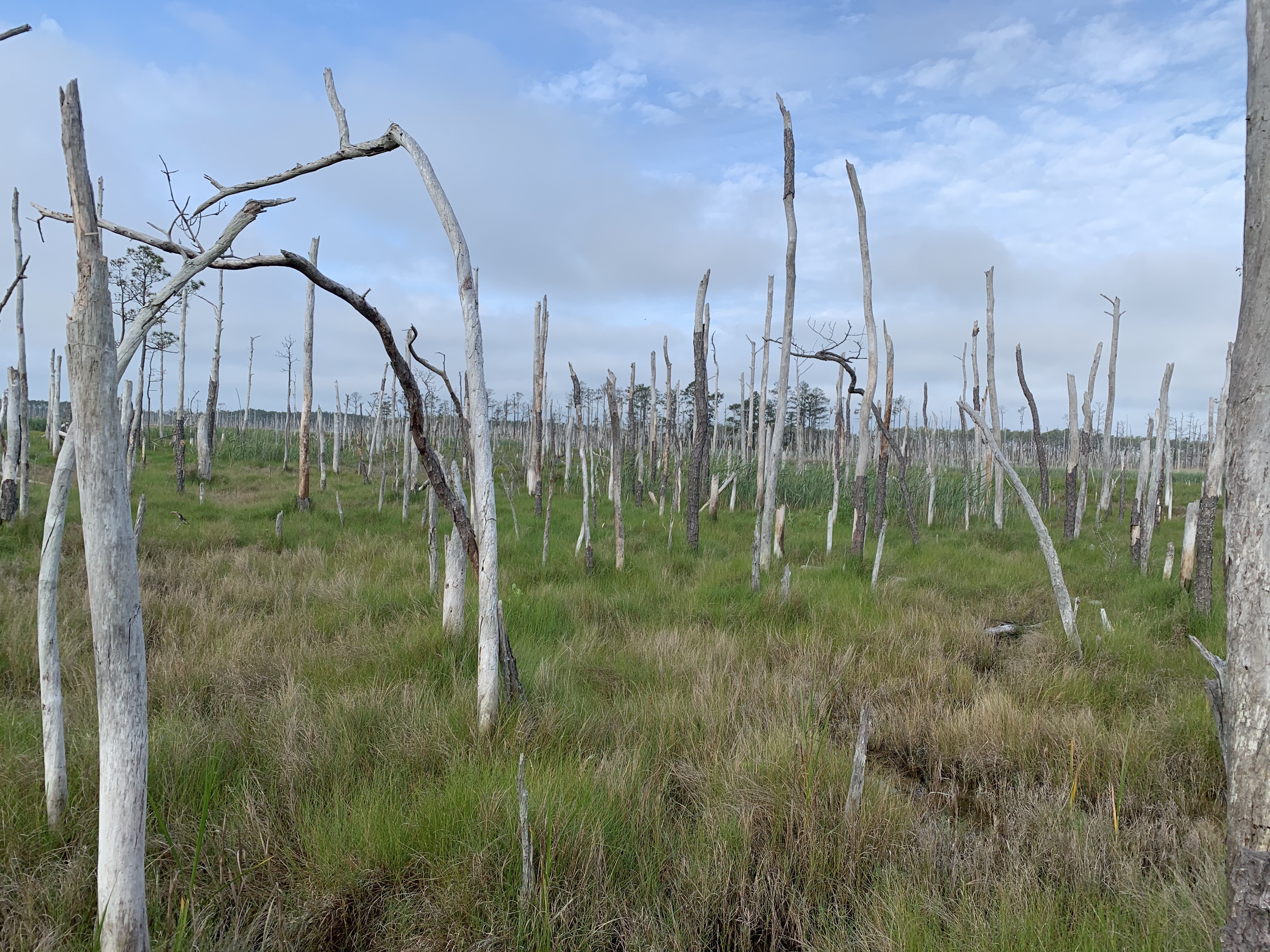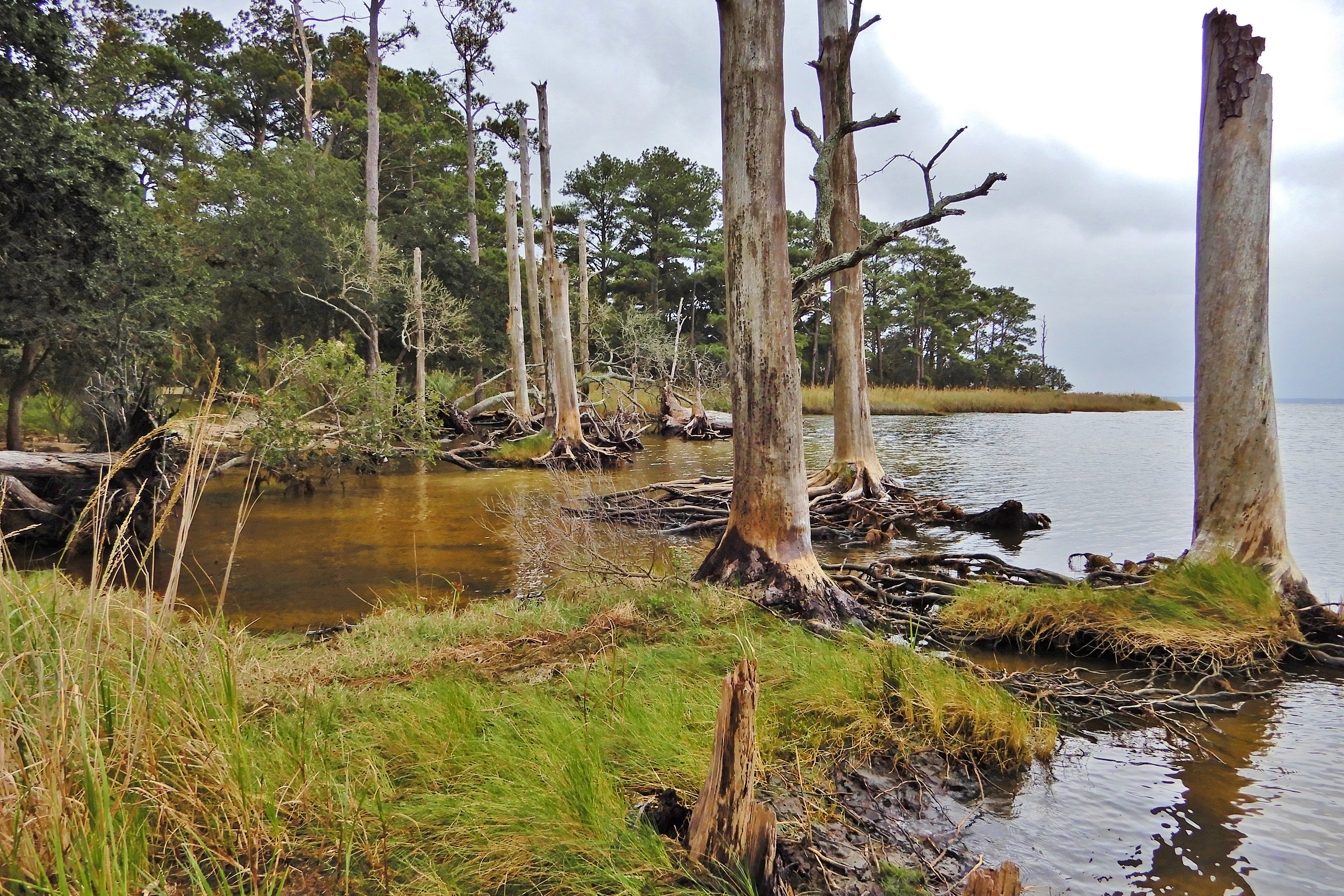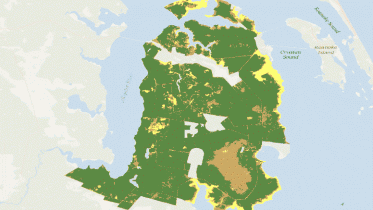
Ghost Forests
Ghost forests are areas of dead trees in former forests, typically in coastal regions where rising sea levels or tectonic shifts have altered the height of a land mass. Forests located near the coast or estuaries may also be at risk of dying through saltwater poisoning, if invading seawater reduces the amount of freshwater that deciduous trees receive for sustenance. Looking at the stratigraphic record, it is possible to reconstruct a series of events that lead to the creation of a ghost forest. Where, in a convergent plate boundary, there has been orogenic uplift, followed by earthquakes resulting in subsidence and tsunamis, altering the coast and creating a ghost forest.




